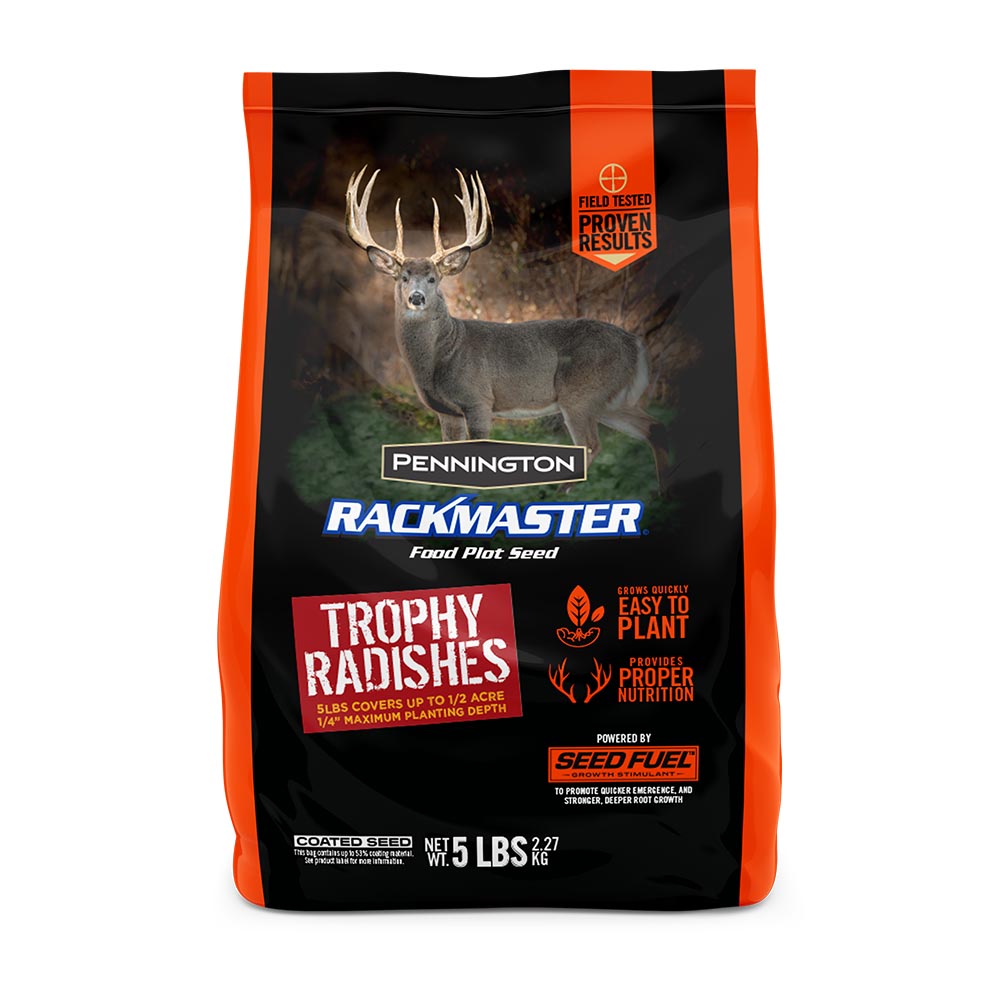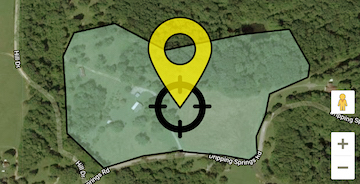
Rackmaster Trophy Radishes
USES:
To attract and provide nutrition for deer. To furnish a high protein and energy food source for bucks and does before and during the fall rut and beyond. In a mixture with winter annual grasses and clover to speed food plot establishment and enhance deer attraction. To build soil organic matter and improve soil tilth.
Sizes:
Method: Choose a site that receives a minimum of 8 hours of full sun. Prepare a clean, smooth and firm seedbed by plowing and dragging the soil. Fertilizer and lime can be applied during this step to incorporate it into the soil. Seed may be drilled on a firm seedbed or broadcasted evenly across the soil surface and covered using a culti-packer or light drag. Making good seed/soil contact is the key to establishing a productive food plot.
Seeding Date: All regions: Aug. 15 - Nov. 1 - ideally about 30 - 45 days before first frost.
Seeding Rate: 10 lbs. /acre (1/4 lb. per 1000 sq. ft.) alone or 3-5 lbs. /acre (1-2 oz. per 1000 sq. ft.) in mixtures.
Depth: 1/4 - 1/2 inch (stand failures will result from seed planted too shallow or too deep).
Fertilizer: Soil testing is highly recommended. Liming to a pH of 6.0 - 7.0 and providing adequate soil levels of potassium and phosphorus are necessary to ensure a productive food plot. See your local county extension office for soil sampling assistance. In the absence of a soil test, apply 300 lbs. /acre 19-19-19 (7 lbs. /1000 sq. ft.) or equivalent fertilizer and 1 ton/acre ag lime (50 lbs. /1000 sq. ft.). Apply fertilizer just prior to seeding. If practical, apply lime a minimum of 3 months before planting.
Management:
To obtain maximum production, apply an additional 30 - 50 lbs. /acre nitrogen 30 to 45 days after emergence with the application of 100 - 150 lbs. /acre (2.5 - 4 lbs. /1000 sq. ft.) 34-0-0 or equivalent nitrogen fertilizer.
Tips for Successful Food Plots:
1. Every successful food plot begins with a soil test. Most woodland soils have low pH and low fertility. A soil test will tell you how much fertilizer and lime is needed. Information on taking a soil test can be obtained from your local county extension office.
2. Spend the extra time necessary to properly prepare the soil by plowing, smoothing and firming the ground. Planting on a weed free, smooth and firm seedbed that allows good seed-soil contact is essential for a thick, productive forage stand.
3. Plant seed at the proper seeding depth. Planting too shallow or too deep can result in stand failure. Seed mixes containing small seeded legumes and forbs should not be seeded deeper than 1/4 inch. Use a cultipacker, log or a light drag to firm the soil after planting.
4. When selecting a wildlife food plot site, choose an area that is long and narrow with curves or bends in it. This provides a sense of comfort and safety for wildlife. When developing food plots, a good rule of thumb is to plant 2.5 to 7 acres of food plots for every 100 acres of habitat.
5. Avoid droughty sites such as eroded hillsides or shallow, rocky soils. Southwest facing slopes are hotter in the summer and tend to dry out faster than bottom land.
6. A minimum of 50% full sunshine is essential for a healthy and productive food plot. Morning sun is better than afternoon sun for summer game food plots. The reverse is generally true in the winter.

